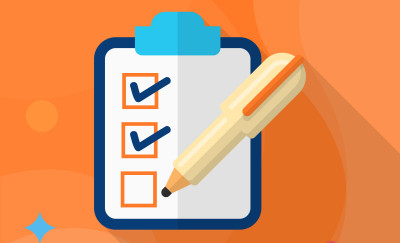
Simply put, a checklist is a list of items for consideration. They can come in several forms, like a list of questions or actions to be carried out. They can be accompanied by checkboxes ticked off when that list item has been completed. People accept the results of a completed checklist as reliable and trustworthy. Thus, it is used as a memory aid or a job tool to ensure all issues have been considered.
Why We Fail
The human brain is capable of holding 4.7 million books in memory. And yet, there is no lack of documented failures in our history. So, why do people still fail, even though we can hold significant information and use many skills? According to philosophers, we die for two reasons: ignorance and ineptitude. We fail, firstly, because we do not have the information to perform a task. We forget also because, although we have the information, we cannot apply it consistently and correctly. The real problems are getting the information and methods in our brains and managing them effectively once they are inside.
Getting Information In
Getting information in our brain to help us succeed is a problem of effort and attention. A psychologist who won a Nobel Prize tells of 2 systems in our brain. System 1 is a fast system that lets us function with minimal effort. We use this system automatically to do things that feel natural and intuitive. System 2 is a slow system that requires conscious, deliberate thought that takes much effort. We use this when making big decisions and solving problems. Instinctively, we prefer to use System 1, and that is why our brain loves checklists. Checklists are familiar and concise.
Managing Information Within
The other reason we fail is because the tremendous amount of information in our heads becomes unmanageable sometimes. People with complex jobs hold an enormous amount of knowledge and experience. These highly trained, highly skilled people are usually hardworking people with critical responsibilities. Over time, they become prone to making mistakes when the need to apply this knowledge and experience arises. This is where a simple checklist can make them better at their jobs without having to spend more time than necessary.
Effectiveness of Checklists
Using a checklist in the workspace can save lives in the operating room, prevent a building from collapsing, or stop an innocent person from going to jail. Checklists can improve performance on the job and help people achieve more consistent results. They are explicit reminders of the minimum necessary steps. They are verification methods, and they support a discipline toward higher performance. Checklists are designed carefully to ensure basic checks are always completed before performing an important task.
Characteristics of a Good Checklist
Atul Gawande, author of The Checklist Manifesto, suggested a good checklist.
- First, it is unique to its users. A standard checklist is a start, but users must customize it to fit their requirements and workflow.
- A good checklist promotes a culture of teamwork and discipline. Checking off boxes is not the ultimate goal.
- A good checklist is reviewed and refined. The only thing constant is change, as they say.
- A good checklist is precise, efficient, and easy to use, even in difficult situations. It should be practical enough to remind users of only the most critical steps. It should not replace experience, training, or skills.
Using Checklists in Your Favorite Apps
Today’s project management software and productivity tools include some form of checklists to help users manage their work efficiently. Asana teams who typically follow specific workflows can create custom templates or use pre-built templates. Therefore, they can set up a workflow without starting from scratch or missing any step.
Trello users can add a checklist to their cards to keep track of subtasks in their cards. Furthermore, they can add multiple checklists in a single card. Basecamp users can use To-do lists to divide their tasks into their Project, Team, or HQ.
AceProject has a recurring task module that removes the burden of creating and editing repetitive work assignments. Whichever app you are using, Bridge24 can integrate with any of them and provide enhanced reporting and exporting capabilities.
Is There a Danger in Using Checklists?
Checklists help prevent failures and promote productivity. The danger is not in the checklists but in how people use them. Sound management practices are not interchangeable with management by checklists. When people use checklists for everything, they develop fatigue for them. As a result, they ignore them, defeating checklists’ very purpose. Checklists are primarily for reference. It is not a replacement for good training and well-developed skills.
Benefits of Using Checklists in the Workplace
A checklist is a standardized list of required steps for repetitive tasks. It provides several benefits. It helps people stay more organized, ensuring they will not skip any critical step in the process. A checklist motivates us to take action and complete tasks. Small wins and the goal-gradient effect encourage us to reach our goals. Checklists help us move quickly, be more efficient, and save time. This, in turn, allows us to focus on more creative activities. It helps us be more specific and confident when delegating tasks. Evidence shows that a simple checklist can help save lives. It enables us also to be better in taking care of our customers.
Suggested articles: Top 10 Pros & Advantages of Using Checklists and The Importance of Using Checklists
Leave A Comment